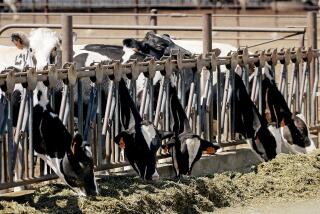Woe to the Apricot
- Share via
Last year’s apricot crop was disastrous. But this year’s has some folks worried about the fruit’s future.
Although the 1996 harvest won’t be quite as bad as 1995’s, it will be more than 40% below California’s five-year average. And some worry that two dismal years in a row may be enough to push the ‘cot off of shopping lists: out of sight, out of mind.
“It doesn’t look good,” says Gene Stokes, director of the California Apricot Advisory Board, an organization of fruit growers. “Two light years in a row, that’s not good at all. People forget about you. You get pushed off of menus. And once you get dropped, it’s almost impossible to get back on.”
The culprit behind this year’s short crop is poor pollination--as it was last year. The reasons are somewhat different, though. Last year’s flowering period--when the fruit is pollinated--came during cold damp weather that chilled even the most ardent bees.
This year, it was the warm winter that turned things awry. Apricots, like most stone fruit, need a certain amount of cold weather to set fruit properly. This year was far warmer than any on record. There were just barely enough “chill hours” for setting fruit.
When they don’t get enough cold, some trees, especially apricots, drop flowers. And that’s what happened this year.
As a result, this year’s projected apricot harvest is only about 60,000 tons. That’s better than last year’s 54,000 tons but far below the state’s five-year average of 105,000 tons.
With so much less fruit on the trees, what apricots there are should be bigger than average. That probably means more will go to the fresh market, because processors prefer the smaller fruit. In a typical year, about a quarter of all apricots wind up being sold fresh, a quarter go to canning, a quarter go to making apricot concentrate for fruit juices and another quarter goes to drying and freezing.
More to Read
Sign up for The Wild
We’ll help you find the best places to hike, bike and run, as well as the perfect silent spots for meditation and yoga.
You may occasionally receive promotional content from the Los Angeles Times.







